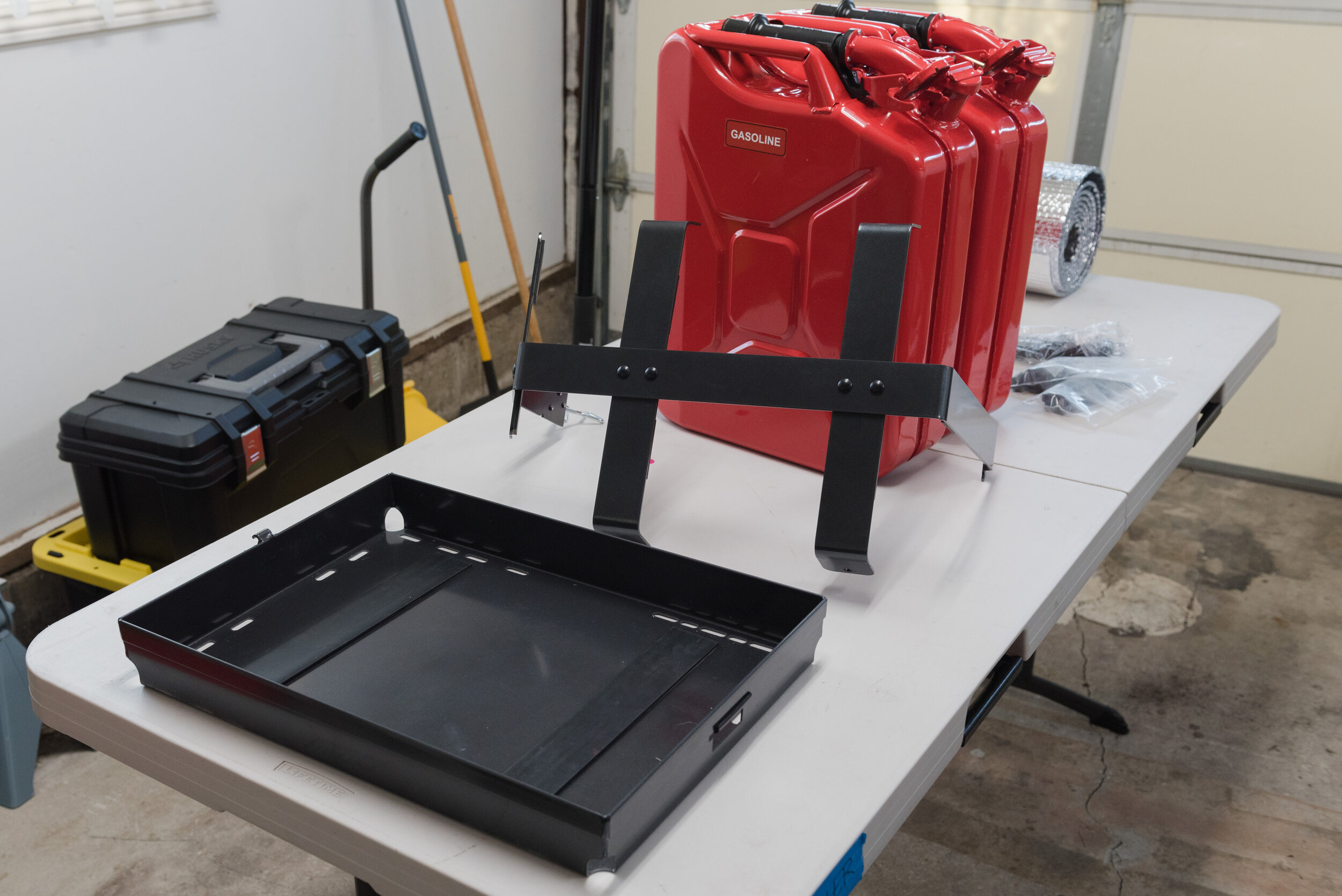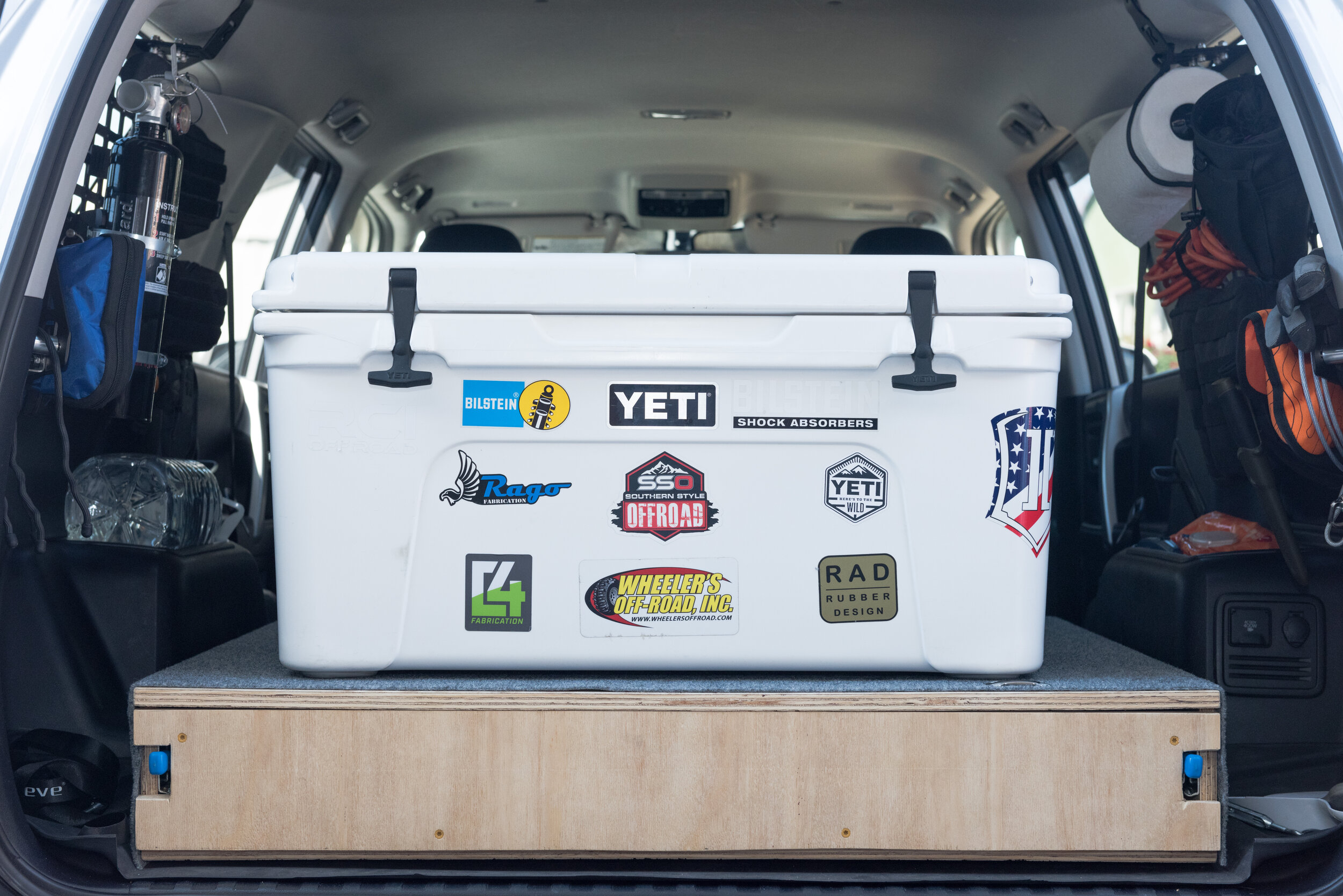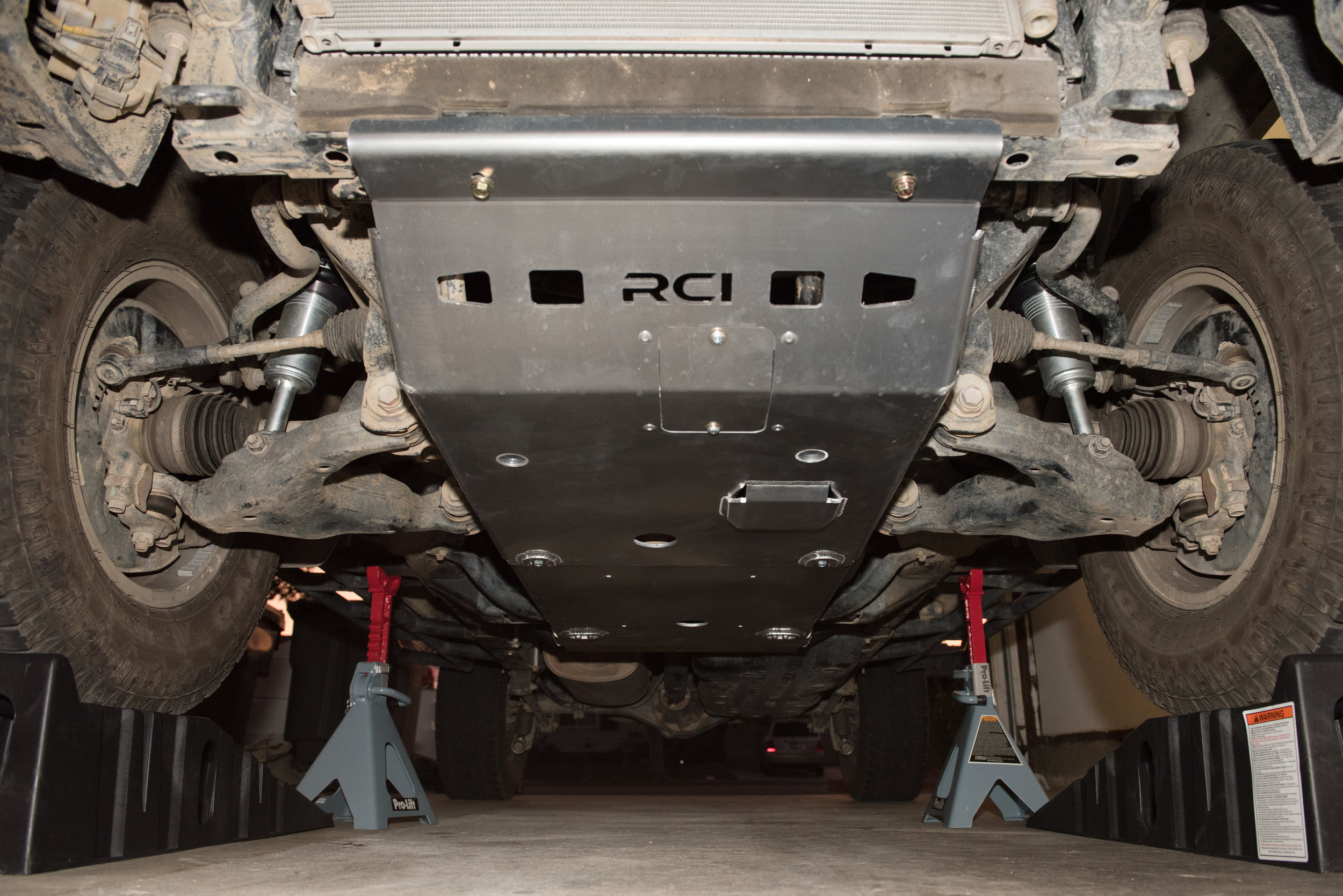A suspension upgrade was high on my list of to-do’s for some time. There are primarily four types of suspension setups, which include spacer lift kits, non-rebuildable coilovers and shocks, rebuildable coilovers and shocks, and long-travel kits. In this discussion I’ll primarily be including the front coilovers (shocks and springs), upper control arms, and rear shocks and springs. This is all to-my-knowledge… so hopefully I’m not too far off!
Spacer lift kits are either polyurethane or metal spacers that can be further categorized into top-plate spacers or pre-load spacers. Top-plate spacers sit above the entire coilover assembly and mount directly to the vehicle. This pushes the lower control arm farther down without changing coil characteristics. Pre-load spacers sit between the coil and coilover top plate, which increases coil pre-load, thereby raising the height of the vehicle. Increasing coil pre-load can negatively impact coil performance and lead to a harsher ride. Spacer lift kits are the cheapest and fastest method to lift a vehicle, but should not be considered a suspension upgrade by any means.
Non-rebuildable coilovers and shocks are just that - non-rebuildable. To my understanding, this mostly concerns the front and rear shocks. In its simplest form, a shock is meant to dampen and limit the overall vehicle body movement or sway. As your vehicle travels along a surface, the shock absorbs and dampens kinetic energy to provide a smoother ride. Over time, the shock’s internal components will degrade and inevitably require replacement. Some shocks are designed to be rebuildable as they can be taken apart and have their internal components replaced. Non-rebuildable shocks are meant to be thrown away and replaced as they near failure, and are much cheaper than rebuildable shocks. The average Joe will probably desire a non-rebuildable system, whereas someone running the Baja 400 will desire a rebuildable system.
Rebuildable coilovers and shocks are the complete opposite of non-rebuildable shocks. These are typically very high-performing shocks that also require maintenance every ~15k miles. With proper maintenance, these rebuildable shocks can last a lifetime. Some handymen will be able to rebuild the shocks in their garage, although some certified suspension shops will be able to rebuild them for you. The rebuild process includes replacing a bunch of o-rings, shock oil, and recharging the shock with nitrogen. Rebuilding these shocks are a necessary, and are a recurring cost.
Long travel kits are an entirely different beast. Long travel suspensions will include all, or most, of the following: extended upper and lower control arms, larger coilovers, extended CV axles, extended tie rods, extended brake lines, limit straps, bump stops, and in most cases, fiberglass fenders to fit higher wheel travel and wheel track width. Long travel kits are primarily used by dune runners and rock crawlers - but you pay for such extreme performance.
The Build
After some thought, I decided to pull the trigger on a new suspension setup featuring non-rebuildable coilovers and shocks. I wanted three improvements out of the suspension:
Increased ground clearance and off-road performance.
Reduced nose dive when stopping.
Reduced body roll when turning.
In the end, I settled on a Bilstein 6112/5160 setup with a 2” rear coil spring. I added IVD Delta Joint UCAs for improved articulation and fore-planning for larger tires, a front differential drop kit since I planned to set the front coilovers at their maximum height (2.65”), and larger front and rear bumpstops. It helped that Memorial Day sales were occurring, and I was able to score some decent deals. All parts were purchased from Wheeler’s Offroad.
Bilstein 6112 Front Shocks (BIL 47-259768)
Bilstein 5160 Rear Shocks (BIL 25-227611)
Icon Vehicle Dynamics 2” Rear Coil Spring Set (IVD 52700)
Icon Vehicle Dynamics Delta Joint Upper Control Arm (IVD 58451DJ)
Wheeler’s Offroad Front Differential Drop Kit (WOR DD2)
Wheeler’s Offroad Front and Rear Superbump Bump Stops
I decided on the Bilstein 6112’s for a couple reasons. This setup was in my budgeted price range for a suspension upgrade. Additionally, Bilstein manufactures the tried-and-true Bilstein 5100, which is a prevalent suspension upgrade for most vehicles. The 6112 is a much beefier shock with a monotube design with a large 60mm body for increased oil capacity and long-term durability. The 5160 is very similar to the 5100 except it features an additional reservoir for additional shock oil capacity.
I intended for the Bilstein 6112 to raise the front-end by 2.5”, but still wanted to maintain some rake (that is, a lower front-end compared to rear-end). A common pairing with the Bilstein 5160 rear shocks is 2” rear coil springs, of which I selected the IVD 52700. The new springs were to add approximately 2” of rear lift, unloaded. These springs are also rated at a slightly higher spring rate than the OEM springs, which reduces body roll and provides a small increase in load bearing capacity.
New upper control arms may not have been required, but I decided to upgrade them anyway during this phase to improve alignment specs (caster). I was also under the impression aftermarket upper control arms were recommended for larger tires - which I plan to add in the future. Just thinking ahead…
Increasing the front-end height lowers the lower control arms, which increases the CV axle angle (transfers power from differential to wheel). From what I understand, this isn’t much of an issue until a lift of 3” or greater is achieved. Poor CV axle angles off-road can result in the CV axle binding, boots tearing, and overall failure. As a precaution, I added a front differential drop kit to lower the front differential by about 1” to decrease the CV axle angle post-lift.
A friend-of-a-friend who is also a mobile mechanic came over to my house to do the install. He was done in a little over 7 hours, and it didn’t sound like he ran into any snags. The Bilstein 6112 features 7 circlip settings used to set overall lift height. As recommended by Bilstein, I wanted a 2.5” front-end lift and used circlip settings of #7 on the driver side and #5 on the passenger side. It was difficult finding the online manual for the 6112’s, so I’ll reference it here.
Overall, the suspension lift turned out great! It added a few inches, really firmed up the ride (less-noticable nose-dive and body roll), and definitely soaks up rough terrain better than the OEM suspension! I’m extremely happy with the outcome for the price (though, recognize that the IVD Delta Joint Upper Control Arms will require regular maintenance. Will be posting some photos later… the next time I do a tire rotation to take some better shots. For now, I’ll let height differences tell the story :).
Pre-Lift Measurements (Wheel Hub to Fender)
Front-Passenger: 20”
Front-Driver: 19.5”
Rear: 21”
Post-Lift Measurements:
Front: 22”
Rear: 21”




























